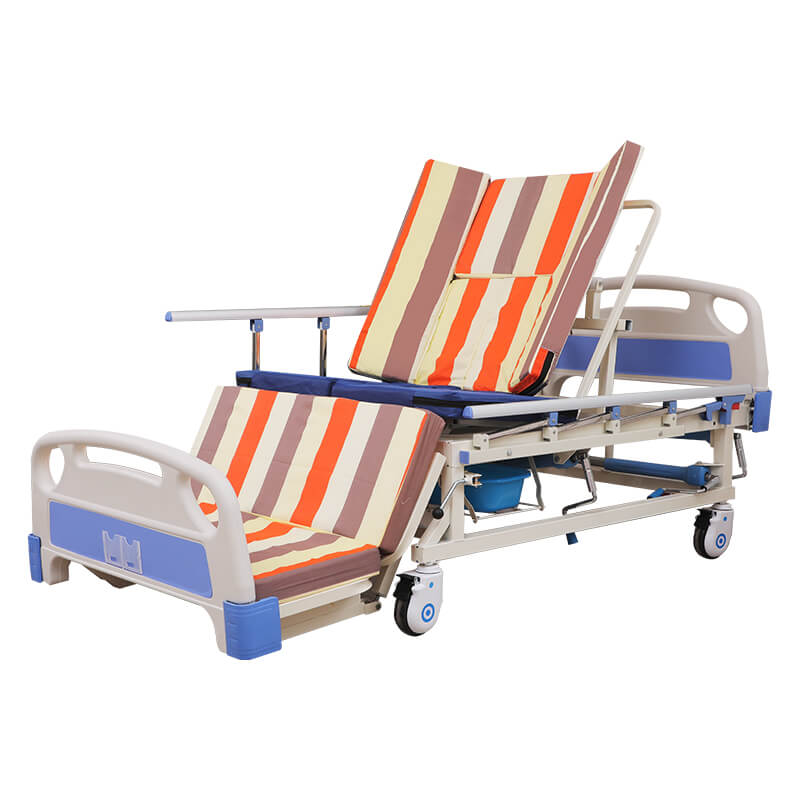Introduction: In the world of healthcare, comfort and well-being are of paramount importance. Adjustable hospital beds have revolutionized patient care by providing customizable positioning options that enhance comfort, facilitate recovery, and improve overall patient outcomes. In this article, we delve into the world of adjustable hospital beds, exploring their features, benefits, and the significant impact they have on patient comfort and healthcare delivery.
Enhanced Patient Comfort and Positioning: Adjustable hospital beds offer a range of positioning options that prioritize patient comfort. These beds typically feature motorized controls that allow healthcare professionals to adjust the bed's height, headrest, footrest, and bed surface inclination. This versatility enables patients to find their ideal positioning, whether it's elevating the head for improved breathing, raising the legs to alleviate swelling, or finding a reclined position for enhanced relaxation. By providing optimal support and comfort, adjustable hospital beds can help alleviate pressure points, reduce discomfort, and promote better sleep, which are vital for a patient's overall well-being and recovery.
Improved Patient Care and Safety: The adaptability of adjustable hospital beds significantly improves patient care and safety. Healthcare providers can easily adjust the bed's height to ensure proper working ergonomics, reducing strain on their backs and minimizing the risk of injury during patient care activities. These beds also come with built-in safety features such as bed rails and locking mechanisms, preventing falls and ensuring patient stability. Additionally, the ability to change bed positions effortlessly facilitates patient transfers, reducing the physical strain on both patients and caregivers. The enhanced safety and ease of use provided by adjustable hospital beds contribute to more efficient and effective healthcare delivery.

Enhanced Accessibility and Patient Mobility: Adjustable hospital beds are designed with patient accessibility and mobility in mind. Many models feature low-height options, making it easier for patients to get in and out of bed independently or with minimal assistance. The adjustable head and foot sections also enable patients to reposition themselves, reducing dependence on caregivers for basic movements. This increased autonomy promotes a sense of dignity and empowerment, fostering a positive patient experience. Furthermore, adjustable hospital beds are compatible with various patient lift systems, allowing safe and efficient transfers between the bed and other healthcare equipment, such as wheelchairs or shower chairs.
Versatility and Customization: Adjustable hospital beds offer a wide range of customization options to accommodate diverse patient needs. They can be equipped with specialized mattresses, such as pressure-relieving or air mattresses, which aid in preventing pressure ulcers and promoting circulation. Some beds also provide additional features like integrated scales for accurate weight monitoring, bedside controls for patient convenience, and integrated IV poles for easy access to medication or fluids. The versatility and customization options available with adjustable hospital beds ensure that each patient's unique requirements can be met, facilitating personalized care and improved patient outcomes.
Conclusion: Adjustable hospital beds have revolutionized patient care by providing customizable positioning options that enhance comfort, promote safety, and improve patient outcomes. With their ability to optimize patient positioning, enhance accessibility, and facilitate mobility, these Nursing beds play a crucial role in delivering high-quality healthcare that prioritizes patient well-being and comfort. As technology advances, we can expect even more innovative features and enhancements in the field of adjustable hospital beds, further improving the patient experience and revolutionizing healthcare delivery.
Comments
Please Join Us to post.
0